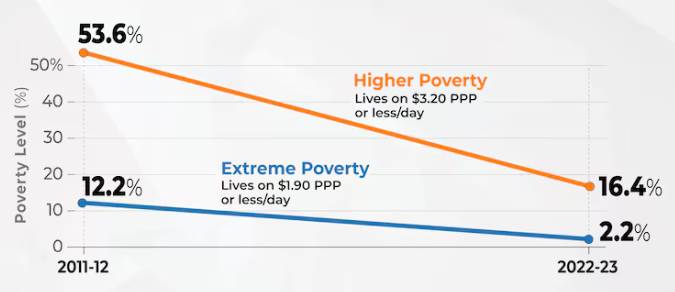7667766266
enquiry@shankarias.in
Indian Government is developing national indicator to measure “extreme poverty”

|
Poverty Headcount Ratio (HCR) |
|